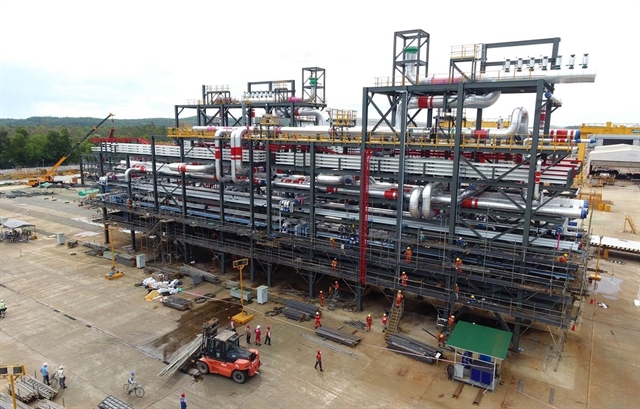 Economy
Economy


|
| Workers at Doosan Việt Nam Heavy Industry in Dung Quất Economic Zone in central Quảng Ngãi Province. Việt Nam's GDP growth is expected to stay on course despite a broad decline for the East Asia and Pacific region. — VNA Photo |
HÀ NỘI — Growth in developing East Asian and Pacific economies is expected to slow from 6.3 per cent in 2018 to 5.9 per cent in 2019, and to 5.7 per cent and 5.6 per cent in 2020 and 2021, reflecting a broad-based decline in export growth and manufacturing activity, said the World Bank (WB) in a newly released edition of its East Asia and Pacific Economic Update on Thursday.
Việt Nam’s GDP growth projection, however, remained unchanged and on course to hit 5.8 per cent by the end of 2019 with forecast growth of 6.1 per cent and 6.2 per cent for 2020 and 2021. Among the region’s major economies, Thailand and the Philippines have been most affected and the World Bank has slashed their growth by 1.0 per cent and 0.4 per cent respectively for 2020.
“Weakening global demand, including from China, and heightened uncertainty around ongoing US-China trade tensions has led to a decline in exports and investment growth, testing the resilience of the region,” said the report.
The rate of poverty reduction was likely to slow down as a result, said Victoria Kwakwa, World Bank Vice President for East Asia and the Pacific.
“We now estimate that almost a quarter of the population of developing East Asia and the Pacific lives below the upper-middle-income poverty line of US$5.50 a day. This includes nearly seven million more people than we projected in April when regional growth was looking more robust.”
The region’s consumption growth, however, is forecast to remain steady, though slightly lower than the same period last year, supported by monetary and fiscal policies. Growth in the smaller economies of the region is likely to stay robust, including steady growth in the tourism, real estate and extractive sectors.
The report warns that risks to the region’s growth prospects have intensified. Prolonged trade tensions between China and the United States would continue to hurt investment growth, given high levels of uncertainty. A faster-than-expected slowdown in China, the Euro zone and the United States, as well as a disorderly Brexit, could further weaken the external demand for the region’s exports.
The WB recommends that countries with sufficient policy space use fiscal and/or monetary measures to help stimulate their economies while guarding fiscal and debt sustainability. Countries in the region would also benefit from staying with trade openness and by deepening regional trade integration.
The ongoing US-China trade dispute, along with slowing global growth, highlighted the need for countries in the region to push for reforms to improve productivity and boost growth, the report said. This included regulatory reforms to improve trade and investment climates to attract investment and facilitate the movement of goods, technology and know-how. — VNS